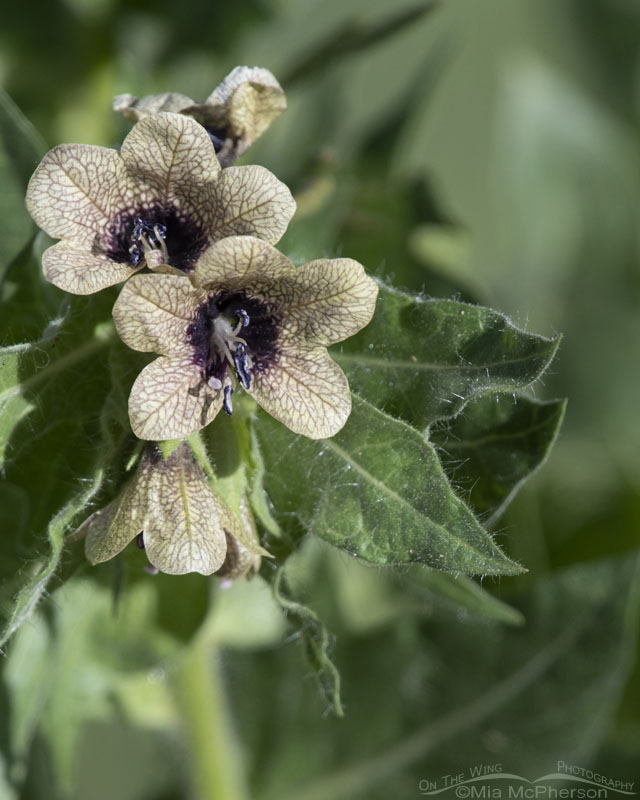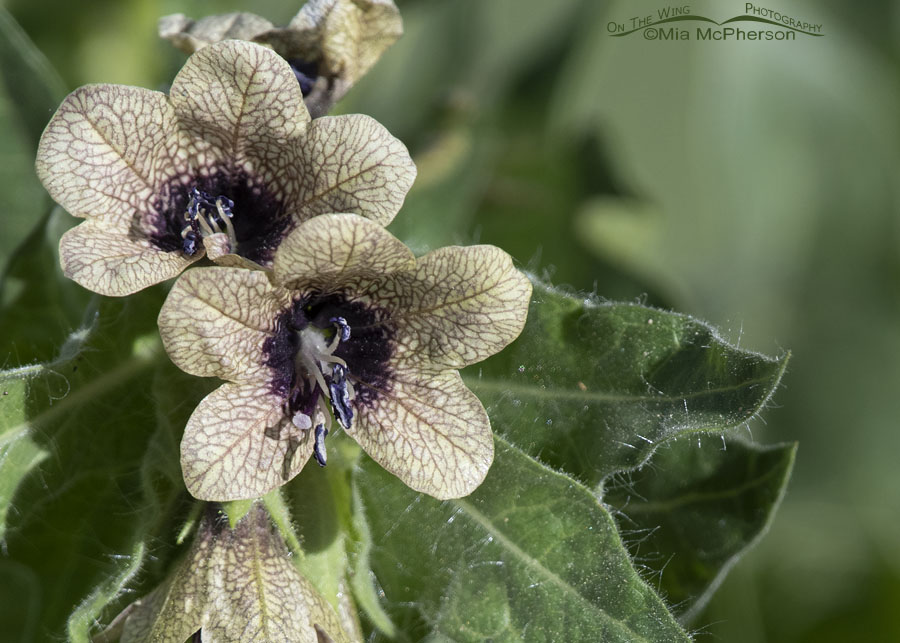 Black Henbane in the Wasatch Mountains – Nikon D500, f7.1, 1/1250, ISO 500, Nikkor 500mm VR with 1.4x TC, natural light
Black Henbane in the Wasatch Mountains – Nikon D500, f7.1, 1/1250, ISO 500, Nikkor 500mm VR with 1.4x TC, natural light
Yesterday morning I saw this wildflower blooming up in the Wasatch Mountains close to the gravel road I was traveling on. I’d never seen the plant or its flowers before so I stopped to take some photos of it.
After taking the photos I wanted of it I keyed it out using an app called Utah Wildflowers and discovered that this plant is non-native and is considered a noxious weed in Utah.
I use the Utah Wildflowers app and while it isn’t always completely accurate it is far better than researching plants by using Google alone.
Google is not your friend when it comes to plant ID because there are many mislabeled photos to be found on line. I use the app then go to sites that are more reliable on line if I need any further help with plant ID. iNaturalist is a good place to start but there are many more.
 Close up of Black Henbane in the Wasatch Mountains – Nikon D500, f7.1, 1/1250, ISO 500, Nikkor 500mm VR with 1.4x TC, natural light
Close up of Black Henbane in the Wasatch Mountains – Nikon D500, f7.1, 1/1250, ISO 500, Nikkor 500mm VR with 1.4x TC, natural light
This plant is Black Henbane (Hyoscyamus niger) and is also known as Henbane, Hog’s-bean, and Stinking Nightshade and is native to the Mediterranean. A little more research online led me to the Utah State University Extension website which provided me with some interesting background information on this plant.
Having lived in Germany for a big part of my childhood and early adult life I found this part personally fascinating:
In the Middle Ages, black henbane was widely used in Germany to augment the inebriating qualities of beer. The names of many German towns originate from the word Bilsen–henbane. Later on, the word was transformed to Pilsen to name the famous Pilsen beer. It took many years to prohibit the use of henbane in brewing after numerous cases of poisonings.
Black Henbane is toxic to humans, wildlife and livestock.
I thought the flowers were exotic looking so I stopped to take photos of the flowers and plants, now I know so much more about it.
Life is good. Stay safe.
Mia
Click here to see more of my flower, shrub and tree photos.


Good pics with a fascinating narrative. The flower does have kind of an other-worldly beauty about it. Thanks Mia.
It is a pretty beast – despite the toxicity.
In my eyes all beer is poison…
Interesting information, I will watch for the plants.
I’ll look for it on my Wasatch hikes. I use the utah wildflower app as well. It can be spotty on information, but like you mentioned, much better than google
I must not have had enough sleep last night because when I saw your post title, I immediately thought you had found some sort of chicken-like wild bird.
 Too bad such an attractive flower is so toxic and invasive.
Too bad such an attractive flower is so toxic and invasive.
Interresting plant. Thanks for the info.
Fascinating flower! Too bad it is noxious & non-native. Interesting background to the plant.